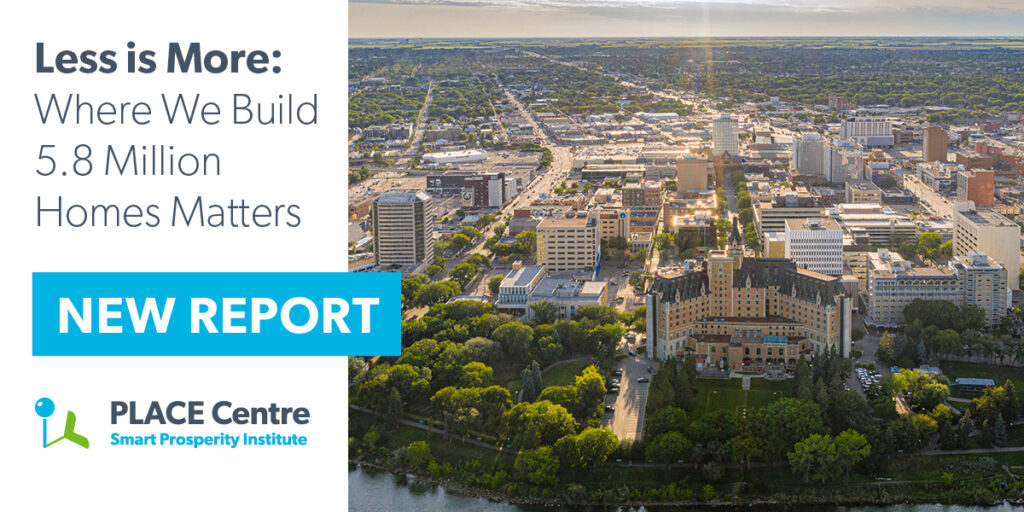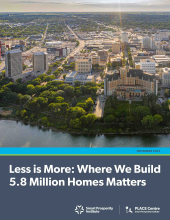There is a broad consensus that Canada is in the midst of a housing affordability crisis. The Canadian Mortgage and Housing Corporation has estimated that 5.8 million homes, nationally, need to be built by 2030 in order to address the housing affordability crisis. In Ontario, the provincial target is 1.5 million homes.
As part of the global effort to mitigate the effects of climate change and keep global warming below 1.5 degrees, Canada has committed to an ambitious emissions reduction plan to reach net zero emissions by 2050 and 40% lower than 2005 levels by 2030. More than tripling the rate of new housing construction, which is what is required to reach CMHC’s 5.8 million new homes by 2030, will drive significant change and economic activity throughout the country.
Our new report, Less is More: Where We Build 5.8 Million Homes Matters, funded by the Clean Economy Fund, is part of a three-report package of GHG emissions modelling submitted to the Task Force for Housing & Climate for the purpose of better understanding the three biggest sources of GHG emissions associated building 5.8 million new homes by 2030: building energy performance; embodied emissions from construction materials and supportive infrastructure; and land use planning decisions. For the full package of research, visit: housingandclimate.ca/ghgs

The report considers two scenarios for where 5.8 million new homes are built: a business-as-usual scenario where we continue past growth patterns and a targeted infill scenario, where new housing construction that would have been land-intensive sprawl is built within existing settlement areas. Drawing on land use change and housing construction data over 2011 and 2021, it estimates that the infill scenario will avoid the loss of hundreds of thousands of hectares of land and avoid 4.5 MT of CO2 emissions in 2030.

Read 'Less is More'



